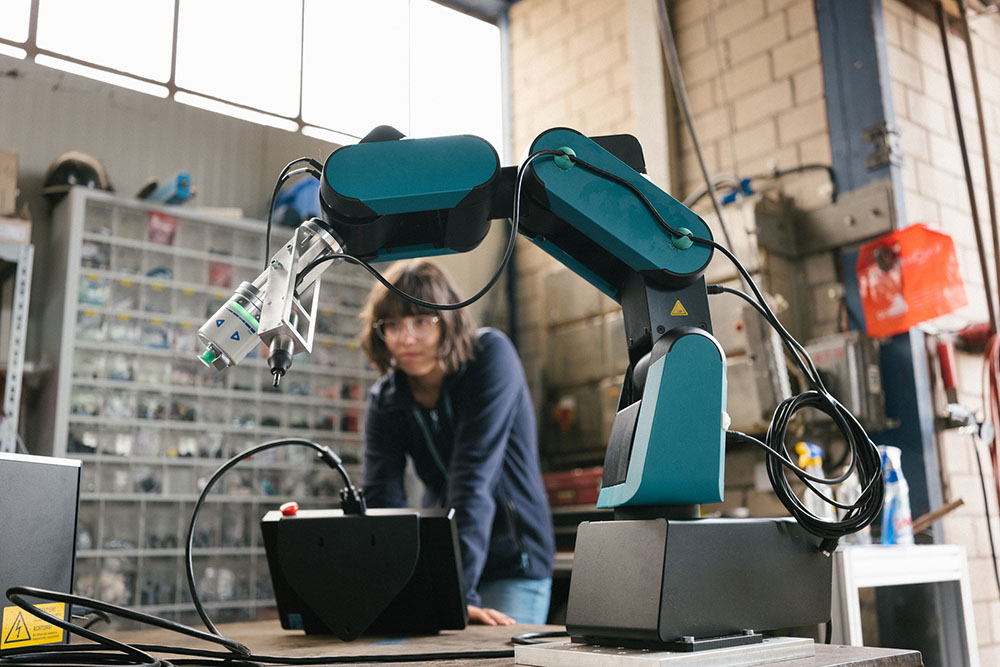Robotics has been experiencing significant growth and innovation in recent years. Factors which have been driving these developments include advancements in hardware, artificial intelligence (AI) and automation. Below, we detail important market features and trends, key players, rising stars, risks and opportunities for investors to consider in 2023.
Market overview: robotics
The global robotics market stood at around $72 billion in value in 2022. By 2032, however, the figure is forecast to reach $283.19 billion, representing a compound annual growth rate (CAGR) of 14.7%. The robots created by firms take many forms. Key segments include:
- Industrial robots used for welding, assembly, painting and material handling.
- Service robots (deployed in sectors such as agriculture and healthcare).
- Consumer robots – e.g. vacuum cleaners and toys.
- Military robots such as drones used for surveillance and reconnaissance.
Historically, the USA and regions of Asia (e.g. Japan) have been world leaders in the global robotics industry. Europe has also made its contribution over the years, although the market growth rate is comparatively slow (3.87% between 2023-28, eventually culminating at a total volume of $15.27 billion).
Key trends
Humans have long been captivated by robots. Star Trek envisaged self-aware androids working alongside humans in interstellar travel. The Terminator, A.I. Artificial Intelligence and I, Robot films imagined a more dystopian future. We are not there yet with any of these visions! Yet recent years have witnessed some impressive steps forward in the world of robotics.
Collaborative robots (“Cobots”) are becoming more prominent and advanced, interacting with humans within close proximity to collaborate on tasks and projects. Operating primarily in the industrial space, Cobots can speed up assembly, packaging and quality control. Cobots are expected to be a key driver behind the overall CAGR of robotics, set to grow 20-30% annually between 2025-2026.
Medical and healthcare robots are also transforming the future of medicine – helping to streamline supply delivery and disinfection. This frees up more time for human providers to care for their patients. Some exciting developments are occurring in areas like surgical assistance as motion control technologies continue to improve. Here, robotics assistance is primarily falling into two main categories: 1/. minimally invasive surgeries for the torso (e.g. robotic hysterectomy); and 2/. orthopaedic surgeries (e.g. hip replacements using 3D imaging).
A third trend in robotics concerns sustainability. Naturally, some observers of robotics worry about the environmental impact of the industry. After all, the manufacturing process can be resource-heavy and robots can consume large amounts of energy to operate. Yet robots have great potential in sustainable roles such as recycling, waste reduction in manufacturing, pesticide reduction and pest detection in agriculture. AI programming is also helping robots to become better at performing tasks in an energy-efficient manner to reduce their carbon footprint.
Key players, rising stars & the road ahead
The key players in the world of robotics vary across the key segments mentioned above. In the industrial space, companies such as FANUC, Schneider Electric and IBM hold leading positions. Within military robotics, however, the likes of Lockheed Martin, BAE Systems and Elbit Systems are prominent. The latter naturally gear their customer base towards national governments. The former has more of a B2B model. Service robots and consumer robots are more directly oriented towards the individual consumer.
It is primarily within these two segments that robotics startups are making names for themselves as rising stars. Many of these early-stage businesses are carving out spaces within specialist niches which larger players have not noticed (or, are too cumbersome to adapt quickly). One example is Karakuri which offers “smart kitchen automation” robots to aid quick service and fast casual restaurants improve their quality, consistency and efficiency. So far, the London-based business has raised $8.5m in seed funding from investors such as Hoxton Ventures and Firstminute Capital.
PHINXT Robotics creates affordable warehouse robots and has already raised $750,000 in pre-seed funding. This company will be especially attractive in 2023 as the UK grapples with a labour shortage in key sectors such as warehouse operations. The company offers an interesting business model by renting out warehouse robots on a subscription basis, rather than requiring B2B customers to buy their hardware outright.
Fieldwork Robotics offers autonomous harvesting robots to assist the world’s soft fruit harvesters. These machines require extra dexterity and flexibility to handle delicate crops (e.g. raspberries) with precision. The Cambridge-based company has raised $1.9m in seed funding and has plenty of runway ahead of it (e.g. $1 billion in picking costs for raspberries).
Conclusion & invitation
Startups in the robotics space face a range of challenges despite the high demand. These include significant initial costs, safety concerns and the need for skilled technicians. Yet if a niche-specialised company can demonstrate to investors that they can viably surmount these obstacles, it could be a valuable addition to an early-stage portfolio.
If you are interested in expanding your portfolio into these kinds of exciting spheres of investing, then we invite you to get in touch with us here at Bure Valley and to consider joining our exclusive investor network:
+44 160 334 0827


